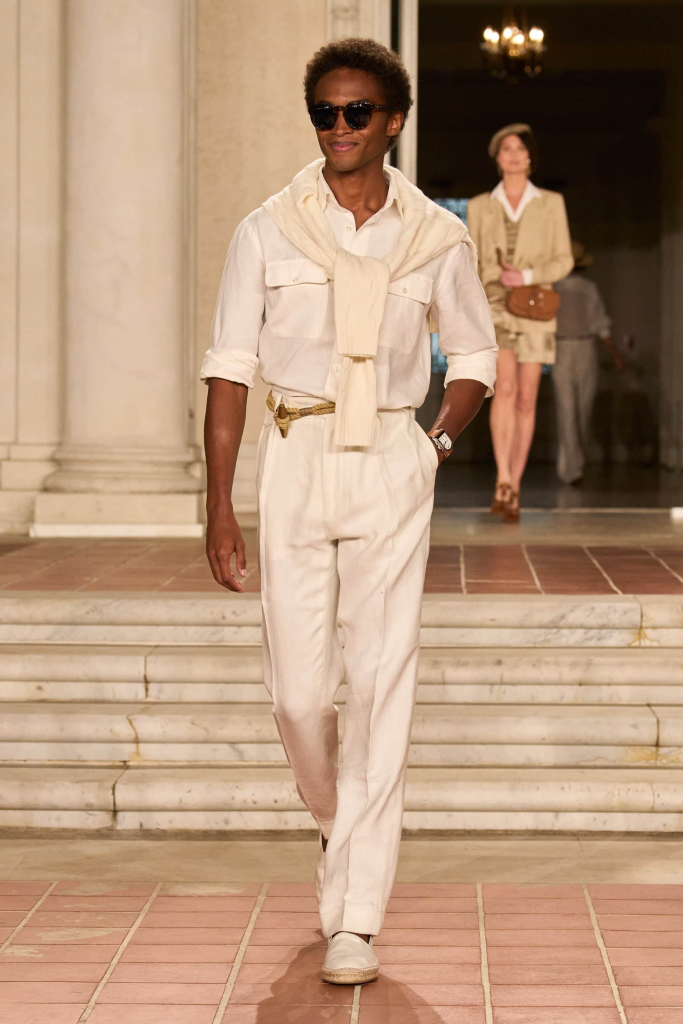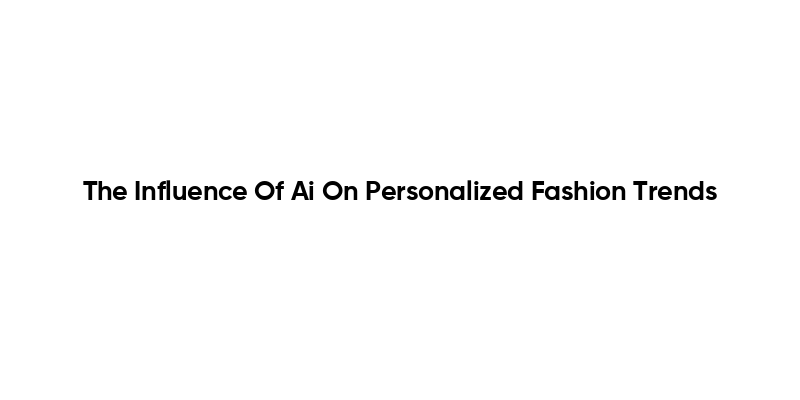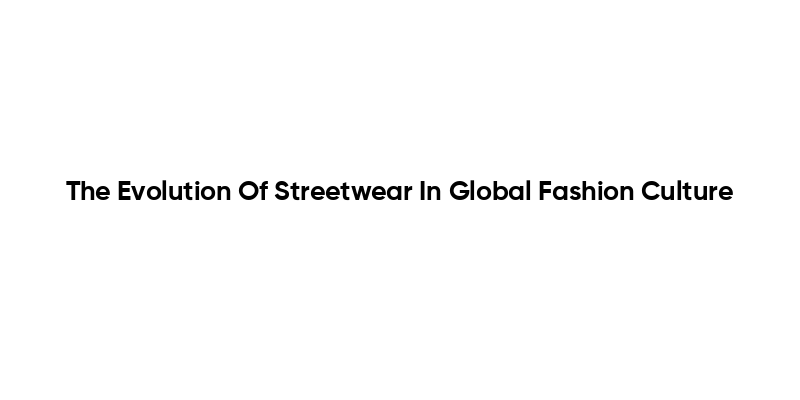The Ralph Lauren fashion show shines brightly amidst the turmoil of the current luxury fashion landscape, particularly following the implementation of Trump tariffs that have rocked the industry. As designers and brands grapple with the ramifications of the global trade war, the iconic runway event stood out as a testament to resilience and creativity. The unveiling of the latest Ralph Lauren collection at the historic Clock Tower building in New York City captivated attendees, illustrating the designer’s ability to continue thriving despite market volatility. With notable stars such as Anne Hathaway and Michelle Williams in attendance, the show not only celebrated high fashion but also offered an escape from the luxury fashion turmoil surrounding it. This event serves as a crucial reflection of fashion industry trends, highlighting how the sector can pivot even when faced with significant economic challenges.
The recent display of craftsmanship and style at Ralph Lauren’s catwalk event illustrates the enduring spirit of American luxury fashion, especially during turbulent times marked by rising trade tensions. As the industry comes to terms with the global trade war ignited by recent tariffs, showcasing the latest collection in such a glamorous setting reaffirms the brand’s commitment to elegance and innovation. The star-studded audience, including prominent celebrities, reflects the ongoing allure of high-fashion spectacles as essential touchstones in the narrative of contemporary style. As brands navigate shifting consumer sentiments and economic hurdles, such events serve as key opportunities to redefine their position in an ever-evolving marketplace. The stakes are high, yet the focus on heritage and aspiration remains a powerful message within the realm of fashion, emphasizing the need for brands to adapt while maintaining their core values.
The Impact of Trump Tariffs on the Fashion Industry
The sudden imposition of Trump tariffs has sent shockwaves through the fashion industry, dubbed by some as the ‘tariffpocalypse.’ As brands grapple with elevated costs and disrupted supply chains, many are left reeling. Tariffs on finished products, particularly those sourced from China and Vietnam, have significantly increased production costs, impacting pricing strategies across the board. With duties reaching as high as 245% on goods from China, the question looms: how will these escalating costs affect consumer buying behavior? As consumer confidence falters amid these trade tensions, brands must pivot to remain resilient in an increasingly volatile market.
As the global trade war unfolds, luxury fashion brands have found themselves in a precarious position. Rising prices could deter consumers who are already tightening their purse strings amidst economic uncertainty. The requirement for brands to rethink their marketing strategies and establish deeper emotional connections with their audiences has never been more pressing. The challenge for luxury brands is to communicate the value of their products to justify these higher prices, especially as they face market dynamics shaped by ongoing geopolitical issues.
Ralph Lauren Fashion Show: A Beacon Amidst Chaos
In the midst of turmoil within the fashion sector, Ralph Lauren’s autumn/winter 2025 collection unveiling stood out as a moment of elegance and reassurance. Held in the historic Clock Tower building, the event became a captivating display of glamour and opulence, drawing in A-list celebrities and industry insiders alike. With the backdrop of a brewing global trade war, this show served not just to showcase clothing but to reaffirm the brand’s legacy and dedication to American luxury. It was a stark reminder of the creative spirit that thrives even in challenging times.
The timing of Ralph Lauren’s show couldn’t have been more critical, occurring just days after an announcement surrounding heightened tariffs sent stocks crashing and sent ripples of anxiety through the luxury sector. Guests were treated to luxurious evening gowns that seemed to pay homage to the American dream, countering the market instability with a celebration of heritage and craftsmanship. In this way, Ralph Lauren managed to not only present a collection but to craft a narrative that resonated with both affluent consumers and wary investors who are seeking stability amidst uncertainty.
Navigating Fashion Industry Turmoil
As the fashion industry grapples with the fallout from the Trump tariffs, brands are forced to navigate uncharted waters. Many are reassessing their supply chains and finding innovative ways to cope with the increased duties that have disrupted traditional manufacturing processes. Brands that once relied heavily on Asian factories now face dual challenges: rising costs and sustaining consumer interest. In this environment, agility and adaptability are crucial for survival as brands reevaluate their strategies to retain their market positions.
Moreover, the so-called ‘luxury fashion turmoil’ has necessitated a shift in focus for many brands. With consumers becoming increasingly sensitive to pricing changes, fashion houses are reevaluating their brand positioning. Those that stress heritage and craftsmanship may find a renewed connection with consumers looking for authentic luxury amidst uncertainty. The current environment presents not just threats but also opportunities for brands to reinvent themselves, demonstrating resilience in the face of adversity.
Crafting a New Narrative in Luxury Fashion
In light of recent challenges, luxury brands must craft compelling narratives that resonate with consumers. The backlash from Trump’s tariffs has drawn attention to the economic disparity that exists within the fashion industry, compelling brands to focus on storytelling that highlights their values, craftsmanship, and commitment to sustainability. As fashion moves forward, the narrative must evolve to emphasize the unique aspects of each brand, fostering a deeper emotional connection with consumers who are increasingly discerning.
As the industry faces relentless change, the potential for luxury brands to lead the conversation around value proposition is vast. Those brands that can effectively communicate their heritage and quality amidst rising prices may emerge as winners in this turbulent environment. By showcasing not just products but the stories behind them, brands can cultivate a loyal following that appreciates authenticity and meaning in their purchases, paving the way for renewed growth in a post-tariff landscape.
Ralph Lauren’s Resilience in Fashion’s Future
The enduring appeal of Ralph Lauren’s brand speaks volumes about its resilience amid adversity. Following a successful fashion show, the company demonstrated its ability to maintain a solid footing despite the turbulence of external economic factors, including the impact of Trump tariffs. With a net revenue earnings increase of 11%, Ralph Lauren has shown that consumers still value the classic American style and quality that the brand represents. This strong performance serves as a beacon for other luxury brands navigating similar challenges during this global trade war.
However, the future of Ralph Lauren, much like the entire luxury sector, remains dependent on the outcomes of ongoing tariff negotiations and economic conditions. As the brand continues to engage with its loyal customer base by emphasizing craftsmanship and elegance, it remains crucial for Ralph Lauren to adapt and respond to shifting consumer expectations. In this era of uncertainty, the brand’s ability to remain relevant while honoring its storied past will be key in ensuring its continued success in the evolving landscape of luxury fashion.
The Role of Heritage in Luxury Fashion Today
Heritage plays a pivotal role in defining luxury brands, especially in turbulent times. For Ralph Lauren, the essence of American luxury is deeply intertwined with its commitment to craftsmanship and a rich narrative that spans decades. Amid the ongoing challenges presented by the global trade war, consumers are increasingly looking to brands that can offer a sense of stability and tradition. Heritage brands like Ralph Lauren must harness these qualities to reassure their clientele that they are not just selling products, but a lifestyle that embodies timeless values.
Moreover, heritage can serve as a strategic advantage in marketing efforts. As brands adjust their pricing structures in response to increased tariffs, invoking a storied past allows them to justify price increases and encourage customer loyalty. Luxury consumers often seek connection and meaning in their purchases; therefore, brands that emphasize their historical background can create a compelling case for their pricing and maintain an aspirational appeal in the market.
Luxury Fashion’s Response to Global Economic Changes
The luxury fashion industry’s response to global economic shifts, especially those stemming from Trump’s tariffs, is a testament to its resilience and adaptability. While the immediate effects of tariffs may lead to significant challenges in pricing and supply chain management, leading brands like Ralph Lauren have begun to position themselves as beacons of stability. This strategic approach not only reinforces customer confidence but also sets the stage for innovative solutions to emerging challenges within global trade.
As brands navigate these economic changes, there is a growing emphasis on proactive measures rather than reactive ones. Many companies are investing in research and development to explore alternative manufacturing methods and materials that align with consumer expectations for quality and sustainability. By addressing the dynamic nature of fashion in light of current economic conditions, luxury brands can ensure they remain relevant and appealing to both new and existing clientele.
The Future of Luxury Fashion Amidst Trade Wars
As the fashion industry adjusts to a landscape altered by trade wars, the future of luxury fashion will likely hinge on how effectively brands can manage costs while retaining their core identity. Ralph Lauren serves as a case study for navigating these challenges with poise, illustrating the importance of brand heritage in consumer loyalty. With tariffs potentially influencing pricing structures, it is essential for luxury brands to maintain their appeal while conveying a strong value proposition to consumers.
Looking ahead, luxury brands may need to embrace collaboration and innovation as tools for survival in this evolving market. By exploring partnerships that drive efficiencies and sustainability, brands can alleviate some of the pressure brought about by tariffs. Additionally, cultivating a strong digital presence will be critical in reaching consumers who are increasingly shopping online. The readiness to adapt to rapid changes in consumer behavior will be a defining element of success in the luxury fashion sector moving forward.
Investing in Luxury Fashion During Economic Turmoil
In uncertain economic climates characterized by trade wars, investing in luxury fashion may appear risky, but savvy investors recognize the potential for long-term gains. Ralph Lauren’s recent fashion show showcased not only a collection but the brand’s resilience amid market fluctuations. By drawing on their legacy, strong financial performance, and loyal customer base, Ralph Lauren presents a compelling investment case. As brands navigate challenges associated with tariffs, the need for established names to innovate and connect with consumers becomes paramount.
Moreover, the current luxury market presents unique opportunities for investors willing to take calculated risks. Brands that adapt well to the changing landscape and leverage their heritage, craftsmanship, and emotional connections with customers may emerge stronger than ever. Investors focused on the luxury sector should keep a close eye on companies that are not only surviving the ongoing tariff turmoil but are poised for growth, as these brands will likely set the standard for excellence in the fashion industry.
Frequently Asked Questions
How are Trump tariffs impacting the Ralph Lauren fashion show?
The Ralph Lauren fashion show is being affected by Trump tariffs as they create turmoil in the fashion industry, resulting in supply chain disruptions and increased costs. These tariffs, announced recently, are part of a broader global trade war that has shaken investor confidence and the luxury fashion market.
What trends are emerging in the fashion industry after the Ralph Lauren fashion show amidst tariffs?
Post-Ralph Lauren fashion show, the industry is witnessing trends that emphasize heritage, craftsmanship, and emotional connections with consumers. As prices are expected to rise due to tariffs, brands are focusing on positioning themselves as desirable and authentic to weather the economic storm.
What can we expect from the Ralph Lauren collection amidst current luxury fashion turmoil?
The Ralph Lauren collection showcased during the recent fashion show displayed glamorous and aspirational designs, aiming to resonate with consumers despite the ongoing luxury fashion turmoil due to tariffs and market volatility.
How does the global trade war affect the Ralph Lauren fashion show experience?
While the Ralph Lauren fashion show goes on, the global trade war creates an undercurrent of uncertainty. The event serves as a strategic move to uplift brand image and investor confidence, even as supply issues and rising costs loom large.
What role does Ralph Lauren play in the luxury fashion industry amid Trump tariffs?
Ralph Lauren is a key player in the luxury fashion industry, steering his £9.4 billion empire through the challenges posed by Trump tariffs. His recent fashion show exemplifies how established brands can maintain relevance and visibility despite market fluctuations.
Are consumer reactions to the Ralph Lauren fashion show influenced by fashion industry trends?
Yes, consumer reactions to the Ralph Lauren fashion show are significantly influenced by current fashion industry trends, including responses to luxury pricing changes and perceived brand value amidst tariffs and economic uncertainty.
What does the Ralph Lauren fashion show indicate about future luxury fashion industry trends?
The Ralph Lauren fashion show suggests a shift towards prioritizing emotional connections, craftsmanship, and heritage in luxury branding, particularly as the industry adapts to the effects of tariffs and market changes.
How did the Ralph Lauren fashion show respond to the challenges of the luxury fashion market?
The Ralph Lauren fashion show responded to luxury fashion market challenges by showcasing a star-studded event filled with aspirational designs, strategically diverting attention from economic concerns related to Trump tariffs.
| Key Point | Details |
|---|---|
| Ralph Lauren Fashion Show | The show took place in New York City, showcasing the autumn/winter 2025 collection amid turbulent economic conditions. |
| Impact of Trump Tariffs | The fashion industry faces significant challenges due to tariffs on imports, causing rising costs and supply chain disruptions. |
| Celebrity Attendance | Stars like Anne Hathaway and Naomi Watts attended, adding glamour and drawing attention amid the economic uncertainty. |
| Market Dynamics | The tariffs prompted fluctuations in company stock prices, affecting brands like Kering and LVMH. |
| Opportunities Amid Uncertainty | Brands can reshape their marketing strategies to emphasize heritage and craftsmanship during challenging times. |
Summary
The Ralph Lauren fashion show stands out as a beacon of resilience in a tumultuous economic landscape marked by Trump tariffs and trade wars. Despite the surrounding chaos, Ralph Lauren successfully unveiled a stunning collection that celebrates glamour and the enduring allure of the American dream. This event not only highlights the brand’s commitment to its legacy but also showcases the potential for opportunities in a time of uncertainty, reinforcing the notion that effective marketing and brand positioning can pave the way for success, even amidst an industry in flux.



